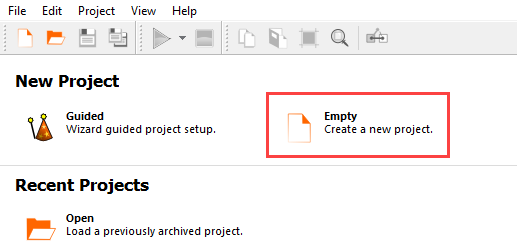This tutorial allows you to complete a calibration of a single degree-of-freedom system excited with initial kinetic energy.
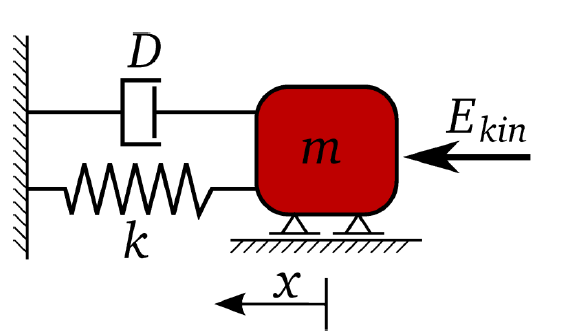
The equation of motion of free vibration is:
The un-damped and damped eigen-frequency is
The time-dependent displacement function is:
The goal is the identification of the input parameters m, k, D, and Ekin to optimally fit a reference displacement function.

The objective function is the sum of squared errors between the reference and the calculated displacement function values
This tutorial demonstrates how to do the following:
Generate a solver chain using text-based input and output
Define the input parameters
Define the output and reference signals and signal evaluation
Perform a sensitivity analysis of signal extraction terms using the global bounds
Re-evaluate the sensitivity analysis with other signal evaluations
Complete a single, objective, unconstrained optimization by minimizing the sum of squared errors over all time steps
Before you start the tutorial, download the oscillator_optimization_calibration zip file from here , and extract it to your working directory.
To set up and run the tutorial, perform the following steps:
- Creating a New Project
- Starting the Solver Wizard
- Selecting the Input File
- Defining the Input Parameters
- Editing the Parameter Properties
- Selecting the Solver Signal File
- Defining the Solver Signal
- Selecting the Reference Signal File
- Defining the Reference Signal
- Defining the Signal Functions
- Defining the Optimization Criteria
- Importing the Solver Call Files
- Creating the Solver Chain Template
- Saving and Running the Project
- Completing the Sensitivity Wizard
- Running the Sensitivity Analysis
- Completing the Optimization Wizard
- Running the Simplex Optimization
From the Wizards pane, drag the Solver wizard to the Scenery pane and let it drop.
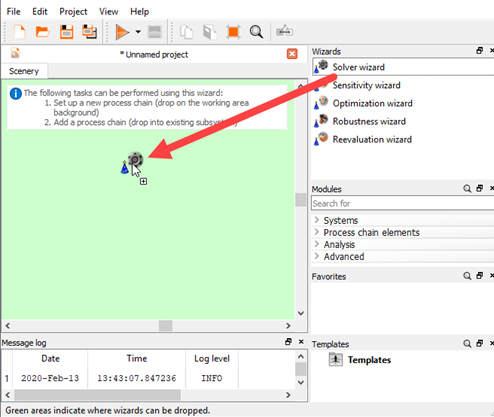
From the solver list, click .
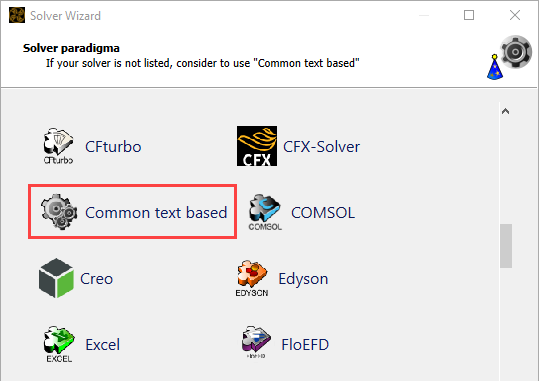
In the Select input file dialog box, browse to the oscillator_optimization_calibration folder and select oscillator.s.
Click .
In the text editor, highlight lines 26-30
Click .
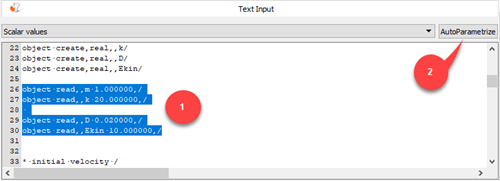
All possible values are marked.
Change the parameter name to
m.
To register the parameter, click Add.
Repeat this procedure for parameters k, D, and Ekin.
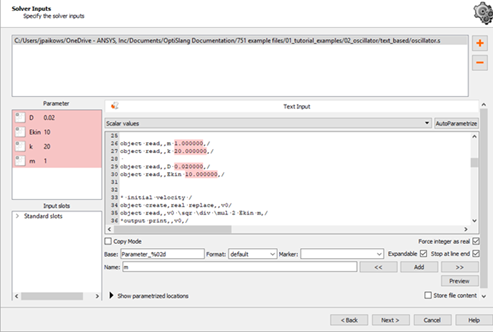
Click .
Double-click the range numbers and set them to the following:
Row Lower Bound Upper Bound m 0.1 5 k 10 50 D 0.01 0.05 Ekin 10 100 
Click .
In the Choose a file to open dialog box, browse to the oscillator_optimization_calibration folder and select oscillator_signal.txt.
Click .
From the File format list, ensure is selected and click .
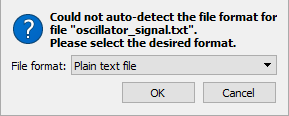
Highlight the text in line 1 (Simulation).
Right-click the selection and select > from the context menu.
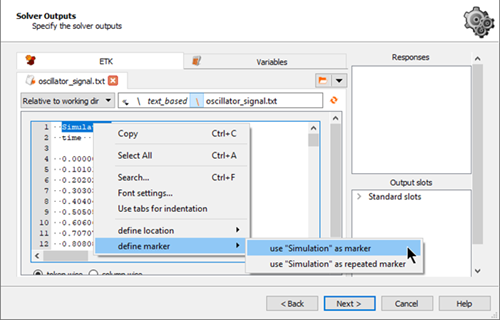
Highlight the first number in line 4 (0.00000)
Right-click the selection and select > from the context menu.
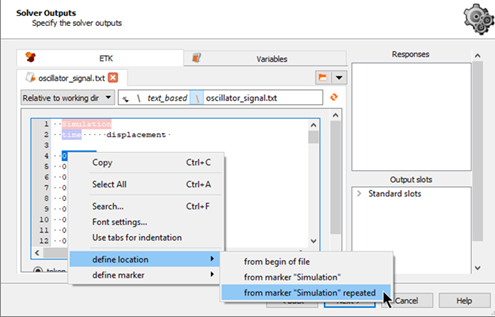
Expand Show advanced options.
Under Token, set
Max: 2.Click .
The signal is displayed in the Responses pane.
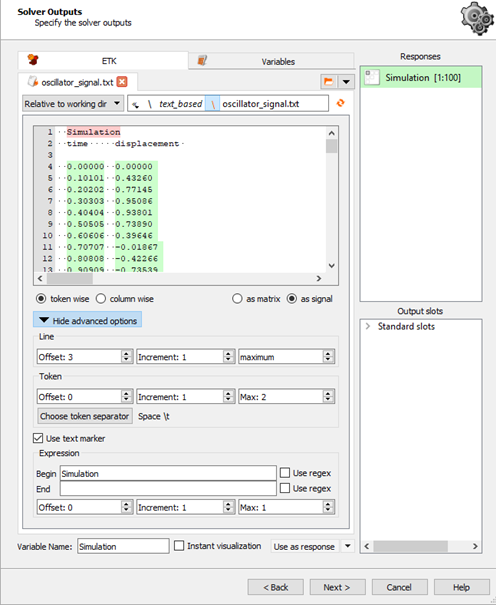
You can select the Instant visualization check box to see if the response is extracted correctly.
To open the reference signal file, click the orange folder.

In the Choose a file to open dialog box, browse to the oscillator_optimization_calibration folder and select oscillator_reference.txt.
Click .
From the File format list, ensure is selected and click .
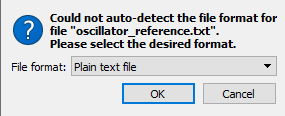
Highlight the text in line 1 (Reference).
Right-click the selection and select > from the context menu.

Highlight the first number in line 4 (0.00000)
Right-click the selection and select > from the context menu.
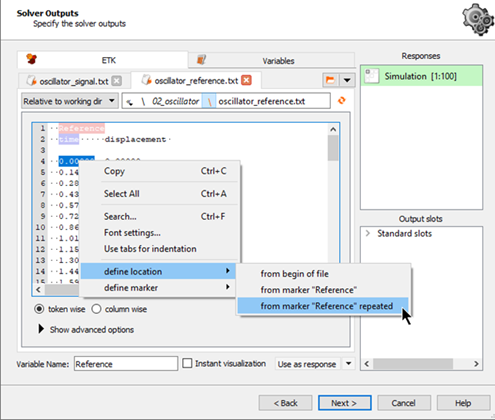
Expand Show advanced options.
Under Token, set
Max: 2.Click .
The signal is displayed in the Responses pane.

Switch to the Variables tab
In row 2 (Reference), double-click the Base path mode cell and select from the drop-down list.
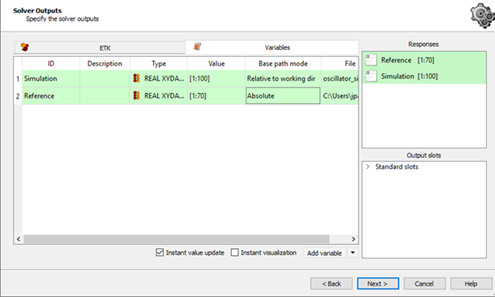
Click .
Double-click the ID cell for the new variable, type
error_norm, and press Enter.Right-click the Expression cell of row 3 (error_norm) and select from the context menu.
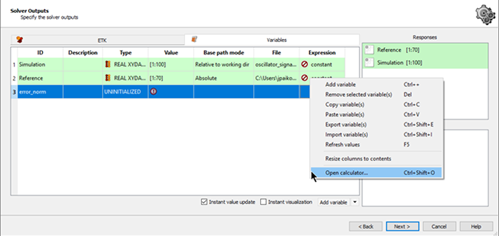
In the calculator, switch to the Linear Algebra tab.
Click .
In the brackets, type
Simulation-Reference.
Click .
Drag the error_norm row into the Responses pane to register it as a response.
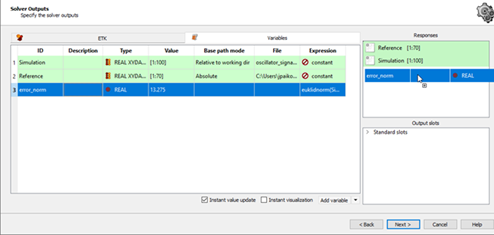
Click .
To define error_norm as a minimization objective, drag the row from the Responses table to the Objective Minimize icon and let it drop.

The new criterion is displayed in the Criteria table.
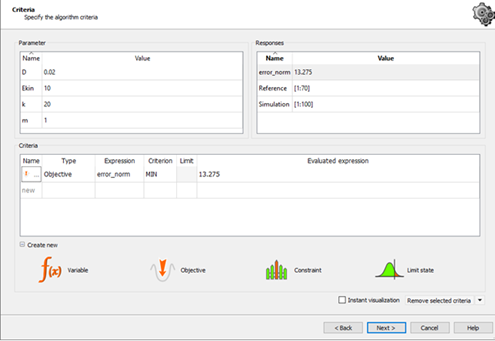
Click .
To the right of the Absolute path field, click the orange folder.
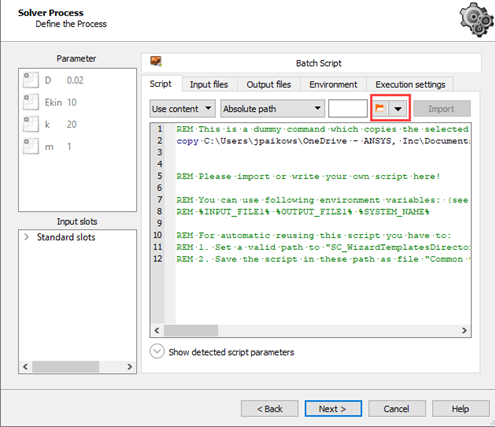
Browse to the oscillator_optimization_calibration folder and select oscillator.bat for Windows systems or oscillator.sh for Linux systems.
Click Open.
Click Import.
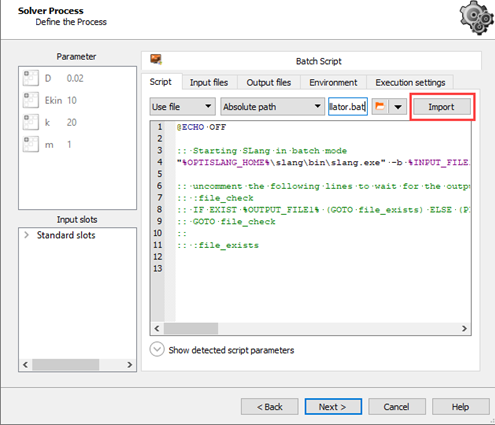
Click .
Select the Create a template from solver chain check box.
In the Template name field, enter
oscillator_signal
Click .
The template is displayed in the Templates pane and the system is displayed in the Scenery pane.
To save the project, click
 .
.Browse to the location to save the project and type a project name in the File name field.
Click .
To run the project, click
 .
.To review the result, double-click the oscillator template and switch to the Result designs tab.

From the Wizards pane, drag the Sensitivity wizard to the head of the oscillator system and let it drop.
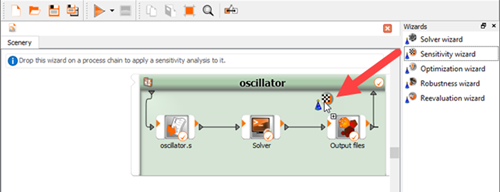
Do not adjust the values in the Parametrize Inputs table.
Click .
Do not adjust or add to the currently displayed values for parameters, responses, and criteria.
Click .
Change Simulation runtime to short.
Select the Space filling Latin Hypercube Sampling sampling method and leave the number of samples as recommended.
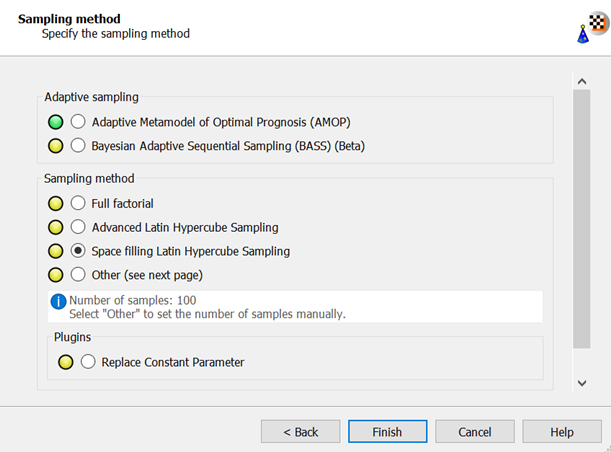
Click .
Review the settings for Tested metamodels.
To set Tested metamodels to , an Enterprise license is required. Alternatively, set it to if the license is not available.
Deactivate signal type responses.
For the approximation of signal type responses, see the Signal Metamodel of Optimal Prognosis tutorial.

Click .
The sensitivity system is displayed on the Scenery pane.
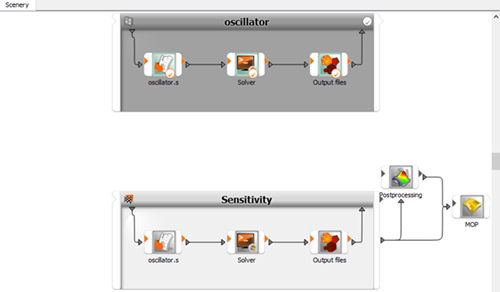
To save the project, click
 .
.To start the sensitivity analysis, click
 .
.The bar on top of the sensitivity system displays the progress of the analysis. The message log displays the sequence of events.

The signal data is displayed.
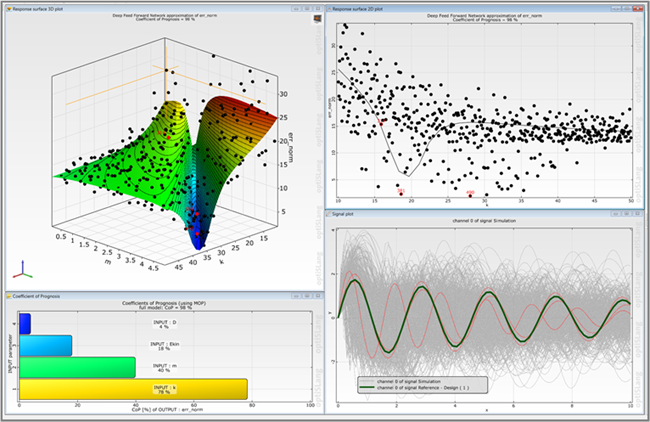
You can observe that there is a highly non-linear relationship between input parameters and the error norm and significant influence of mass (m) and spring constant (k).
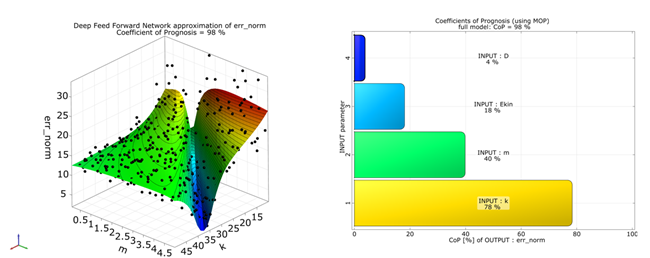
From the Wizards pane, drag the Optimization wizard to the head of the Sensitivity system and let it drop.

Do not adjust the values in the Parametrize Inputs table.
Click .
Do not adjust or add to the currently displayed values for parameters, responses, and criteria.
Click .
Click .
From the Analysis status list, select .
Select the optimization method.

Click .
Leave the additional optional settings at the default and click .
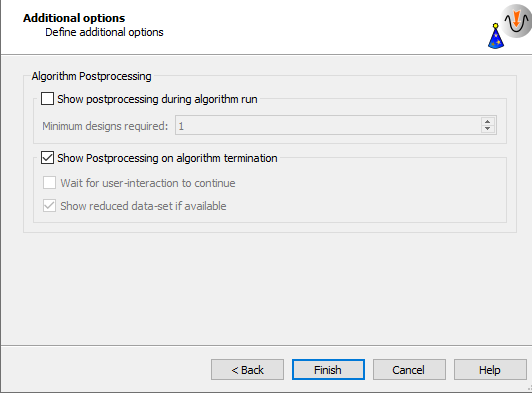
The Simplex system is connected to the Sensitivity system.




